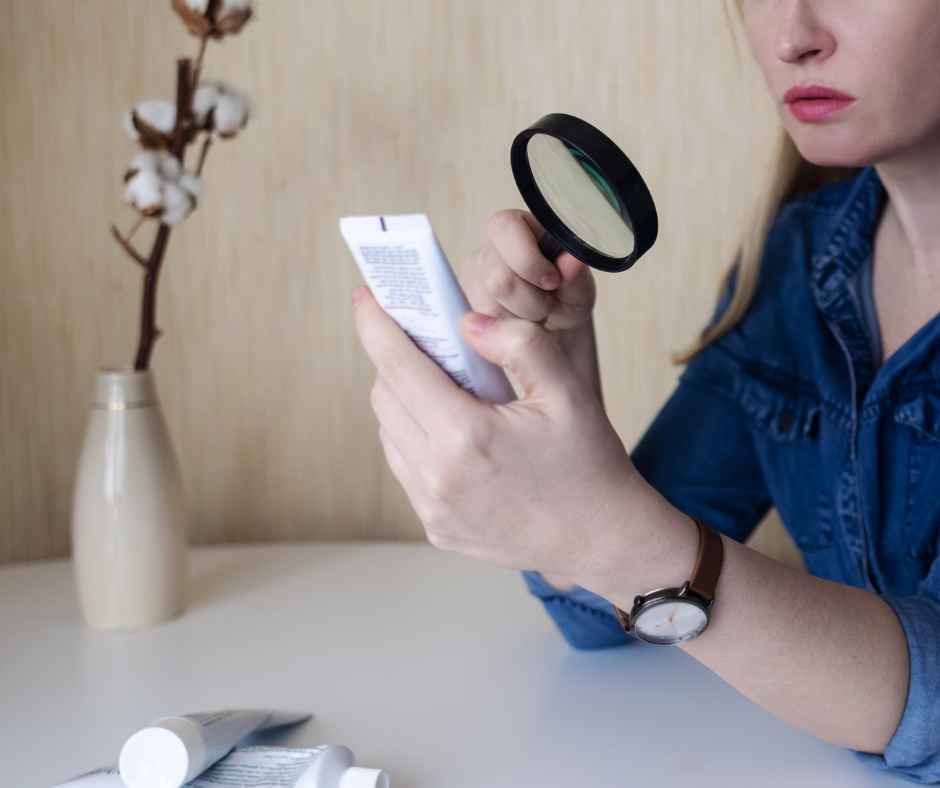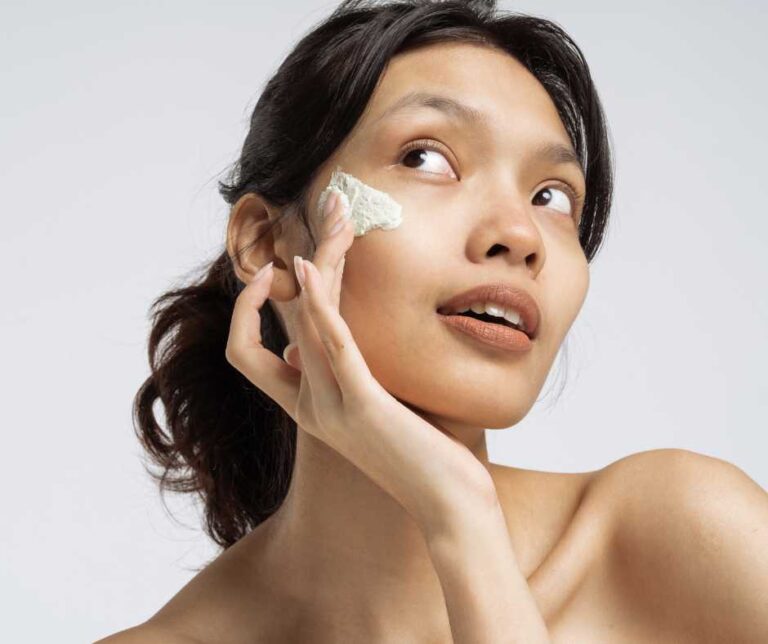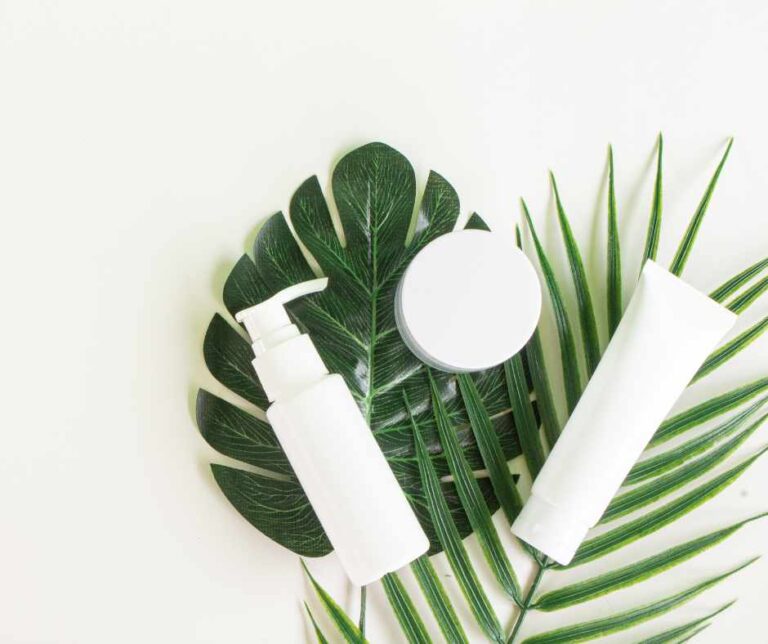Clean Beauty Products: Common Toxic Ingredients to Avoid – Your Complete Guide

As an Aesthetic Doctor, I noticed in recent years the clean beauty movement has gained significant momentum as consumers become more aware of what they’re putting on their skin. While the beauty industry continues to evolve, understanding which ingredients to avoid can be overwhelming. This comprehensive guide will help you navigate toxic ingredients commonly found in beauty products and make informed choices for your skincare routine.
What Makes an Ingredient Toxic?
Before diving into specific ingredients, it’s important to understand that “toxic” ingredients can affect our bodies in various ways; because lets face it, we need to know what we’re putting in our bodies.
Some may cause immediate reactions like skin irritation, while others might have long-term effects through repeated exposure. Environmental impact is another crucial factor to consider.
Key Ingredients to Watch Out For
1. Parabens
Parabens are preservatives commonly found in cosmetics and skincare products. They’re identified on labels as methylparaben, propylparaben, butylparaben, and ethylparaben.
Why avoid them?
- Linked to hormone disruption
- May interfere with reproductive functions
- Potential connection to breast cancer
- Can cause skin irritation in sensitive individuals
2. Phthalates
These chemicals are often hidden in fragrances and used to make products more pliable.
Common concerns:
- Endocrine system disruption
- Reproductive health issues
- Developmental problems
- Often unlisted in ingredients as they’re part of “fragrance”
3. Formaldehyde and Formaldehyde-Releasing Preservatives
These preservatives can be found in many personal care products, including:
- Shampoos
- Body washes
- Nail products
- Hair straightening treatments
Health risks:
- Known carcinogen
- Skin irritation
- Respiratory issues
- Eye irritation
4. Synthetic Fragrances
The term “fragrance” can hide hundreds of undisclosed chemicals in your products.
Why be cautious:
- Potential allergens
- Hormone disruption
- Headaches and migraines
- Respiratory issues
- Skin sensitivity
5. Sulfates (SLS and SLES)
Common in cleansing products, these surfactants create that satisfying lather we’ve come to expect.
Concerns include:
- Skin irritation
- Stripping natural oils
- Environmental toxicity
- Potential contamination with carcinogenic byproducts
6. Oxybenzone and Octinoxate
Common in sunscreens, these chemicals are raising concerns for both human health and environmental impact.
Key issues:
- Hormone disruption
- Coral reef damage
- Skin allergies
- Potential photoallergic reactions
7. Triclosan
Once popular in antibacterial products, this ingredient is now under scrutiny.
Problems include:
- Antibiotic resistance
- Hormone disruption
- Environmental toxicity
- Immune system impacts
Clean Alternatives to Consider
When avoiding these toxic ingredients, look for products containing:
- Plant-based preservatives
- Natural fragrances from essential oils
- Organic emollients
- Mineral-based sunscreen ingredients
- Naturally derived surfactants
Effective Natural Preservatives
- Grapefruit seed extract
- Rosemary extract
- Neem oil
- Vitamin E (tocopherol)
- Leuconostoc ferment filtrate
Safe Moisturizing Ingredients
- Jojoba oil
- Squalane
- Hyaluronic acid
- Aloe vera
- Shea butter
How to Make the Switch to Clean Beauty
Reading Labels
Learn to identify harmful ingredients by:
- Checking ingredient lists thoroughly
- Using clean beauty apps and databases
- Understanding certification labels
- Researching unfamiliar ingredients
Gradual Transition Tips
Make the switch manageable by:
- Starting with products you use most frequently
- Replacing items as they run out
- Focusing on leave-on products first
- Research brands committed to transparency
Building Your Clean Beauty Routine
Morning Routine Essentials
- Gentle cleanser with natural surfactants
- Alcohol-free toner
- Clean serum
- Non-toxic moisturizer
- Mineral sunscreen
Evening Routine Recommendations
- Oil-based makeup remover
- Natural cleanser
- Chemical exfoliant (if needed)
- Clean treatment products
- Nourishing night cream
The Impact of Clean Beauty Choices
Choosing clean beauty products affects more than just personal health:
- Reduced environmental pollution
- Support for sustainable practices
- Better working conditions in manufacturing
- Advancement of green chemistry
Environmental Benefits
- Less plastic packaging
- Biodegradable ingredients
- Reduced water pollution
- Sustainable sourcing practices
Industry Impact
- Increased transparency
- Innovation in green chemistry
- Better working conditions
- Sustainable packaging solutions
Common Myths About Clean Beauty
Myth 1: Natural Equals Safe
Not all natural ingredients are safe, and not all synthetic ingredients are harmful. The focus should be on safety and efficacy rather than natural versus synthetic.
Myth 2: Clean Beauty Is Less Effective
Modern clean beauty products can be just as effective as conventional ones, thanks to advances in green chemistry and formulation technology.
Myth 3: Clean Beauty Is Always More Expensive
While some clean beauty products are pricey, many affordable options exist. The key is understanding ingredients and making informed choices.
Conclusion
Making the switch to clean beauty products doesn’t have to be overwhelming. By understanding which ingredients to avoid and making informed choices, you can gradually transition to a cleaner, safer beauty routine. Remember that “clean” doesn’t always mean “natural” – the focus should be on safety and transparency in ingredients.
Resources and Further Reading
Stay informed through:
- Environmental Working Group’s Skin Deep Database
- Clean beauty certification organizations
- Reputable clean beauty retailers
- Scientific research on cosmetic ingredients
Recommended Apps and Tools
- Think Dirty
- Yuka
- CosDNA
- Good Face Project
Remember: While this guide provides general information, individual sensitivities vary. Always patch test new products and consult with healthcare providers if you have specific concerns.
Regular Updates
The clean beauty industry is constantly evolving. Stay informed about:
- New research findings
- Updated regulations
- Emerging ingredients
- Innovative formulations






